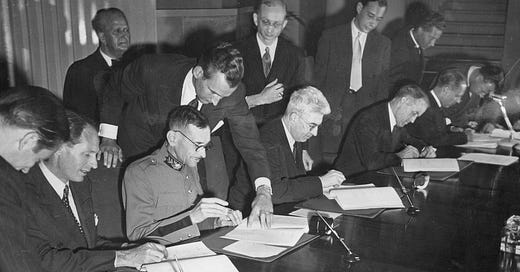Preparing for War: The Making of the 1949 Geneva Conventions by Boyd van Dijk. Oxford University Press, 2022. 376 pages.
Dispelling what he calls the “foundation myth” that the atrocities of the Second World War motivated the postwar powers to a rare show of unity in 1949, Boyd van Dijk argues that the Third Geneva Convention was in fact a fraught proce…
Keep reading with a 7-day free trial
Subscribe to Polemology Positions to keep reading this post and get 7 days of free access to the full post archives.




